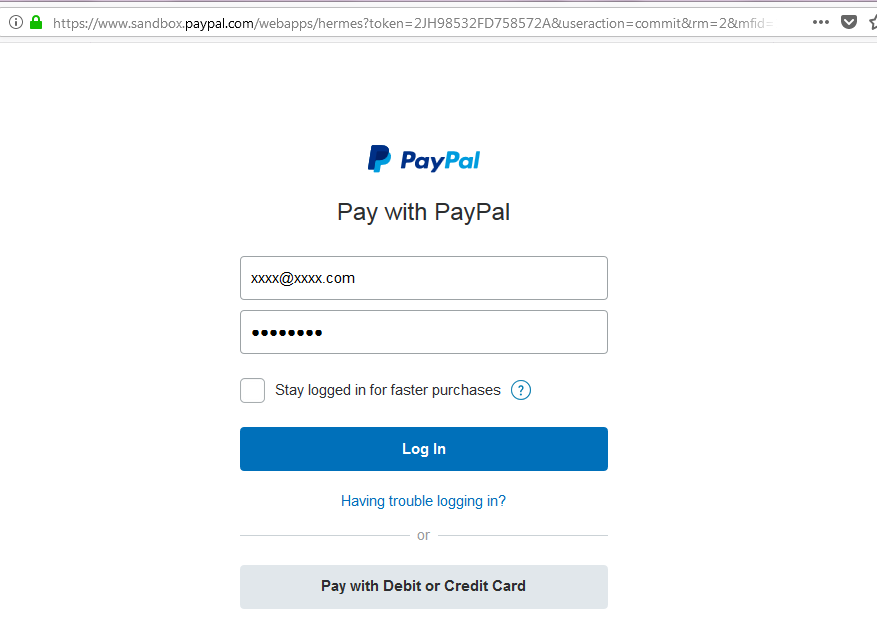PayPal Login: PayPal, a global leader in online payment solutions, emphasizes the need for secure logins to protect user transactions.
This article offers a detailed step-by-step guide on how to securely log in to your PayPal account, ensuring your financial information remains protected.
Preparing to Login to Your PayPal Account
Logging into your PayPal account securely is essential to protect your personal and financial information. Before you begin, it’s crucial to ensure that your device is secure and you have all necessary details at hand. Here’s how to get started:
Quick Tips on Securing Your Device Before Logging In
- Update Your Software: Ensure your operating system and any installed software are up-to-date with the latest security patches and updates.
- Install Antivirus Software: Use reliable antivirus software to protect your device from malware and other security threats. Regularly scan your device to keep it clean.
- Enable Firewall: Turn on your device’s firewall to help block potentially harmful connections to your device.
- Use a Secure Connection: Always use a secure Wi-Fi connection while logging into your PayPal account. Avoid public Wi-Fi networks at cafes, airports, or hotels.
- Enable Two-Factor Authentication: Before logging into PayPal, set up two-factor authentication (2FA) on your device for an added layer of security.
- Clear Your Browser Cache: Clear your browser cache and cookies regularly to remove stored data that could potentially be exploited.
What You Need Before You Start
- PayPal Account Credentials: Have your username and password ready. If you have set up 2FA, have your mobile device accessible for verification codes.
- Secure Internet Connection: Ensure you are connected to a secure and private internet connection to avoid interception of your sensitive information.
- Updated Browser: Use the latest version of a trusted web browser to access your PayPal account, ensuring it has the newest security features.
- Email Access: Have access to the email associated with your PayPal account in case you need to verify information or reset your password.
By following these guidelines, you can safeguard your information and securely manage your PayPal transactions.
Step-by-Step Guide to PayPal Login
Below, we’ve outlined the simple steps to log in to your PayPal account for both web and app users, followed by the crucial importance of reviewing the terms and conditions before you agree to them.
For Web Users
1. Open Your Browser: Launch your preferred web browser and go to PayPal.com.

2. Access the Login Page: Click on the ‘Log In’ button located at the top right corner of the homepage.
3. Enter Your Credentials: Type your registered email address or phone number, then click ‘Next.’ Enter your password on the following page.
4. Secure Your Login: Optionally, you can save your login information on your device for quicker access in the future. Remember to use this feature only on personal devices.
5. Complete the Login: Click ‘Log In’ to access your PayPal account. If prompted, complete any additional security verifications.
For App Users
1. Download the App: Install the PayPal app from your device’s app store—Google Play for Android or the App Store for iOS.
2. Open the App: Tap on the PayPal app icon on your home screen to open it.
3. Enter Login Information: Input your email address or phone number, then tap ‘Next.’ Provide your password on the next screen.
4. Biometric Login: If your device supports biometric features, like a fingerprint or facial recognition, you can use these for quicker access.
5. Access Your Account: Once your credentials are verified, you will be logged into your PayPal account directly through the app.
Importance of Reviewing Terms Before Agreeing
1. Understand Your Obligations: Knowing the terms and conditions helps you understand what PayPal expects from you as a user and what you can expect from PayPal.
2. Avoid Surprises: Reviewing the terms can help you avoid unexpected fees, account limitations, or other operational nuances that could affect your use of the service.
3. Legal Awareness: Being aware of the legal implications, including privacy policies and user rights, ensures that you are fully informed about how your data is used and protected.
By taking the time to familiarize yourself with how to log in and the importance of understanding the terms of service, you can ensure a safe and efficient use of PayPal, aligning with your financial handling and online transactions.
Troubleshooting Common PayPal Login Issues
Encountering problems while trying to log into your PayPal account can be frustrating. Here’s a guide to help you identify common login issues and their solutions, ensuring you regain access to your account swiftly.
Common Problems and Solutions
Forgotten Email or Password:
Solution: Use the ‘Forgot?’ link on the login page to reset your password or recover your email. You will need access to your registered email or phone number to receive the reset instructions.
Account Locked or Restricted:
Solution: Accounts can be locked for security reasons. If you receive a message that your account is locked or restricted, follow the instructions provided by PayPal to restore access, which might include verifying your identity.
Browser Issues:
Solution: Clear your browser’s cache and cookies, or try logging in from a different browser or device. Sometimes, outdated browser settings can prevent successful logins.
Two-Factor Authentication Failures:
Solution: Ensure your linked device is nearby and operational, as you’ll need it to receive the authentication code. If you’re not receiving the code, check your device’s connectivity or request a new code.
Unexpected Errors:
Solution: If error messages appear without a clear reason, wait a few minutes and try again. Temporary server issues can sometimes cause login failures.
How and When to Seek Help
Use the Help Center: PayPal’s Help Center is stocked with articles that can guide you through various issues, including login problems.
Contact Support: If you cannot resolve the issue on your own, contacting PayPal support through their website or app is advisable. They offer chat, email, and phone support.
Timing: Seek help immediately if you suspect unauthorized access to your account or if you’ve tried the suggested solutions without success. Quick action can prevent potential security breaches.
Following these steps should help you resolve most issues encountered during the PayPal login process. Always ensure your contact details are up-to-date in your PayPal account to facilitate easier recovery and support interactions.
Enhancing Your PayPal Account Security
Ensuring the security of your PayPal account is essential to protect your financial information and prevent unauthorized access. Here are practical ways to enhance your PayPal account security.
Why and How Often to Change Your Password
Why Change Your Password:
- Prevent Unauthorized Access: Regular password changes help prevent unauthorized access by making it harder for hackers to gain entry into your account.
- Mitigate the Impact of Data Breaches: If your data is exposed in a breach, changing your password can minimize the potential damage, as the new password will not match the compromised one.
How Often to Change Your Password:
- Regularly: It is recommended to change your password at least once every three to six months.
- Following Incidents: Always change your password immediately if you suspect that your account has been compromised or after a security breach notification.
Benefits of Two-Factor Authentication and Other Security Features
Two-Factor Authentication (2FA):
- Enhanced Security: 2FA adds an additional layer of security by requiring not only a password and username but also something that only the user has on them, like a smartphone app or token, to access the account.
- Reduced Risk of Fraud: This method significantly reduces the risk of fraud and unauthorized access, even if someone knows your password.
Other Security Features:
- Security Alerts: Set up alerts to receive notifications for any unusual activity or unauthorized transactions. This allows for quick action if something suspicious occurs.
- Secure Encryptions: PayPal uses end-to-end encryption to protect your sensitive data, ensuring that your transactions and personal information are secure from prying eyes.
- Regular Monitoring: Regular monitoring of your account activity is vital. Review your transactions regularly to catch any unauthorized transactions early.
However, implementing these security measures will greatly enhance the safety of your PayPal account, giving you peace of mind while conducting transactions online.
Best Practices for Managing Your PayPal Account
Managing your PayPal account effectively ensures safer transactions and a smoother payment experience. Below are some essential practices to keep your account in top shape:
Regular Review of Account Transactions
- Frequent Monitoring: Make it a habit to check your account activity daily or weekly. This helps in spotting unauthorized transactions or errors early on.
- Set Alerts: Enable transaction alerts through PayPal’s settings. You’ll receive notifications for every transaction, keeping you informed in real-time.
- Review Statements: Download and review your monthly statements. Compare your records with those provided to ensure all transactions are correct.
- Use Secure Connections: Always log in to your PayPal account from a secure, private Wi-Fi network. This reduces the risk of hacking and fraud.
Keeping Your Contact Information Up-to-Date
- Verify Your Details: Regularly check and update your email address, phone number, and postal address. This ensures you receive all account notifications and communications without delay.
- Enable Two-Factor Authentication: For enhanced security, activate two-factor authentication. This requires a second form of identification beyond just your password, significantly improving your account’s security.
- Update Legal Documents: If there’s a change in your legal name or status, update these changes promptly on your PayPal account to avoid any discrepancies or service interruptions.
By adhering to these best practices, you not only safeguard your PayPal account but also enhance its functionality and reliability, ensuring a secure and efficient digital payment experience.
FAQs about PayPal Login
1. How do I log into my PayPal account?
To log into your PayPal account, visit the PayPal website or open the mobile app. Click on the ‘Log In’ button, and enter your registered email address and password. If you have enabled two-factor authentication, follow the prompts to complete the process.
2. What should I do if I forgot my PayPal password?
If you’ve forgotten your password, click the ‘Forgot password?’ link on the login page. You’ll need to provide your email address associated with your PayPal account, and follow the instructions sent to your email to reset your password.
3. Can I log into PayPal without a phone number?
Yes, you can log into PayPal without a phone number. While a phone number is required for account recovery and additional security verification, you can log in using just your email address and password.
4. Is it safe to save my PayPal login details on my device?
Saving your PayPal login details on your device can be convenient but poses a security risk if your device is lost or stolen. It is recommended to use a secure password manager or ensure your device has robust security measures in place.
5. Why am I having trouble logging into PayPal?
Login issues can be due to incorrect login details, problems with your internet connection, or PayPal’s servers experiencing downtime. Check your credentials and connection first, and if the problem persists, contact PayPal support for assistance.
Conclusion
To quickly recap, logging into your PayPal account involves just a few straightforward steps: navigate to the PayPal website or app, enter your registered email address and password, and if prompted, complete the two-factor authentication for added security.
As you manage your PayPal account, remember to prioritize security. Always log out after using public or shared devices, regularly update your passwords, and enable two-factor authentication if you haven’t already. Stay informed about the latest security practices and any updates PayPal might introduce to ensure your financial information remains protected.
By following these simple guidelines, you can enjoy a seamless and secure experience with PayPal, keeping your transactions smooth and your financial data safe.
References
For additional information and to verify the content discussed in this article regarding PayPal login procedures, the following resources are invaluable. These sources are reputable and provide detailed insights that can enhance your understanding and guide you through the login process safely and efficiently.
- PayPal Official Site – Visit PayPal’s Help Center for official guides and support directly from PayPal, including step-by-step login instructions.
- Consumer Financial Protection Bureau – The CFPB offers resources on managing online payment accounts securely. Learn more at their official website here.
- Digital Transactions – For broader context on secure online payments and industry standards, Digital Transactions provides updated and comprehensive analysis. Check their insights here.
These links are provided to ensure that you have access to reliable information that can assist with any issues or further questions regarding the PayPal login process.

